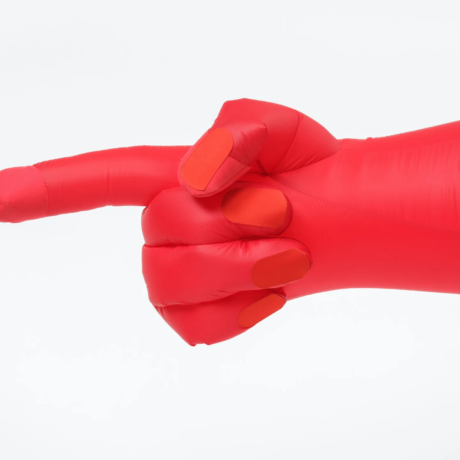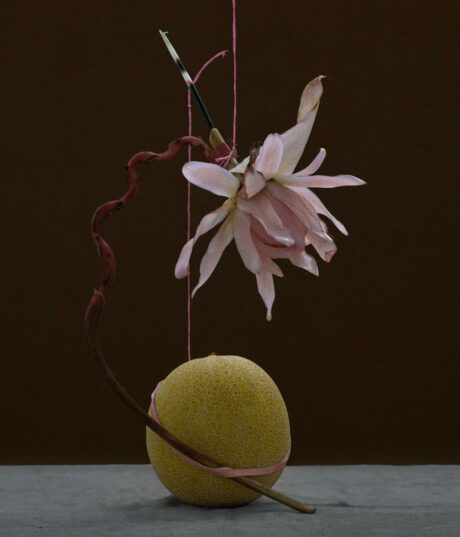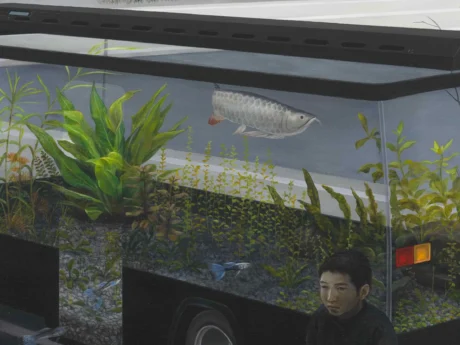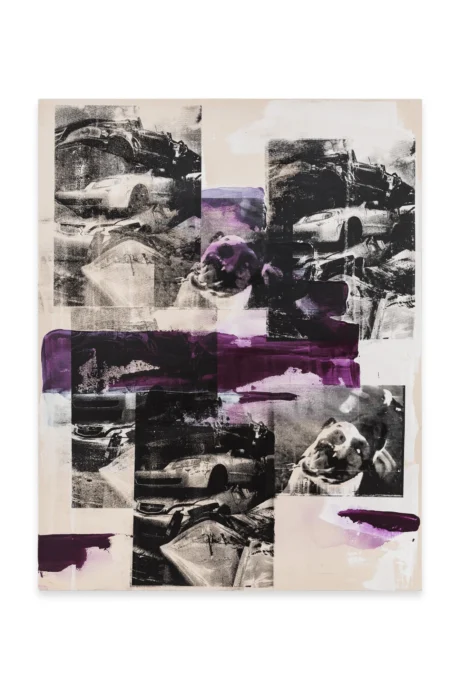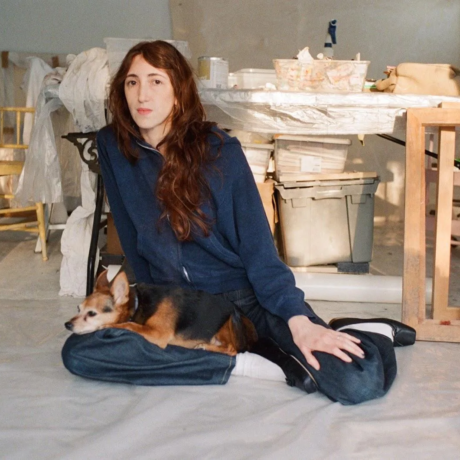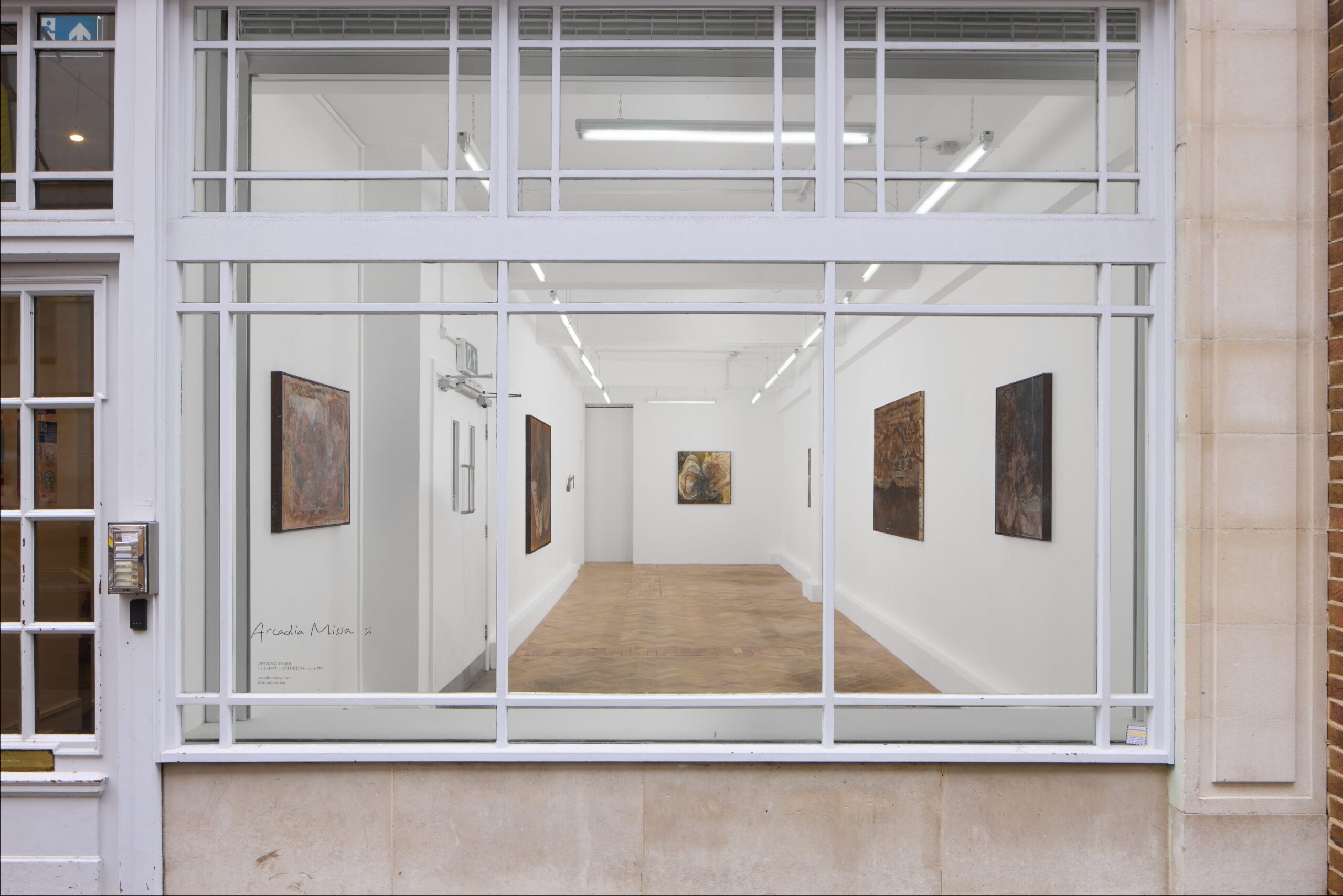
There is a certain animation to Reina Sugihara’s paintings; soft lines in apparent motion, dots dancing, shapes twisting, forms contracting. It feels like the painting is swirling and spinning before my eyes, or maybe I’m spinning. This woozy experience reflects something of the artist’s own process. Sugihara tells me that “I usually begin painting initial images on an easel. As the images become more abstract and somewhat scattered, I move the painting to the floor, and until the painting is completed, I work on it while moving around it whilst holding a brush. This is because it’s easier to discern traces of the surface and the intention of the paintings – I follow the paintings. I don’t determine the orientation of the work while I’m working on the painting because I am constantly circling around it. I decide on the top and bottom of the work sometime after I have completed painting it.” Perhaps, then, the movement you can sense, the dizzy immersion in Sugihara’s world, is the after-effect of the artist’s method, as you too ‘follow the painting’.
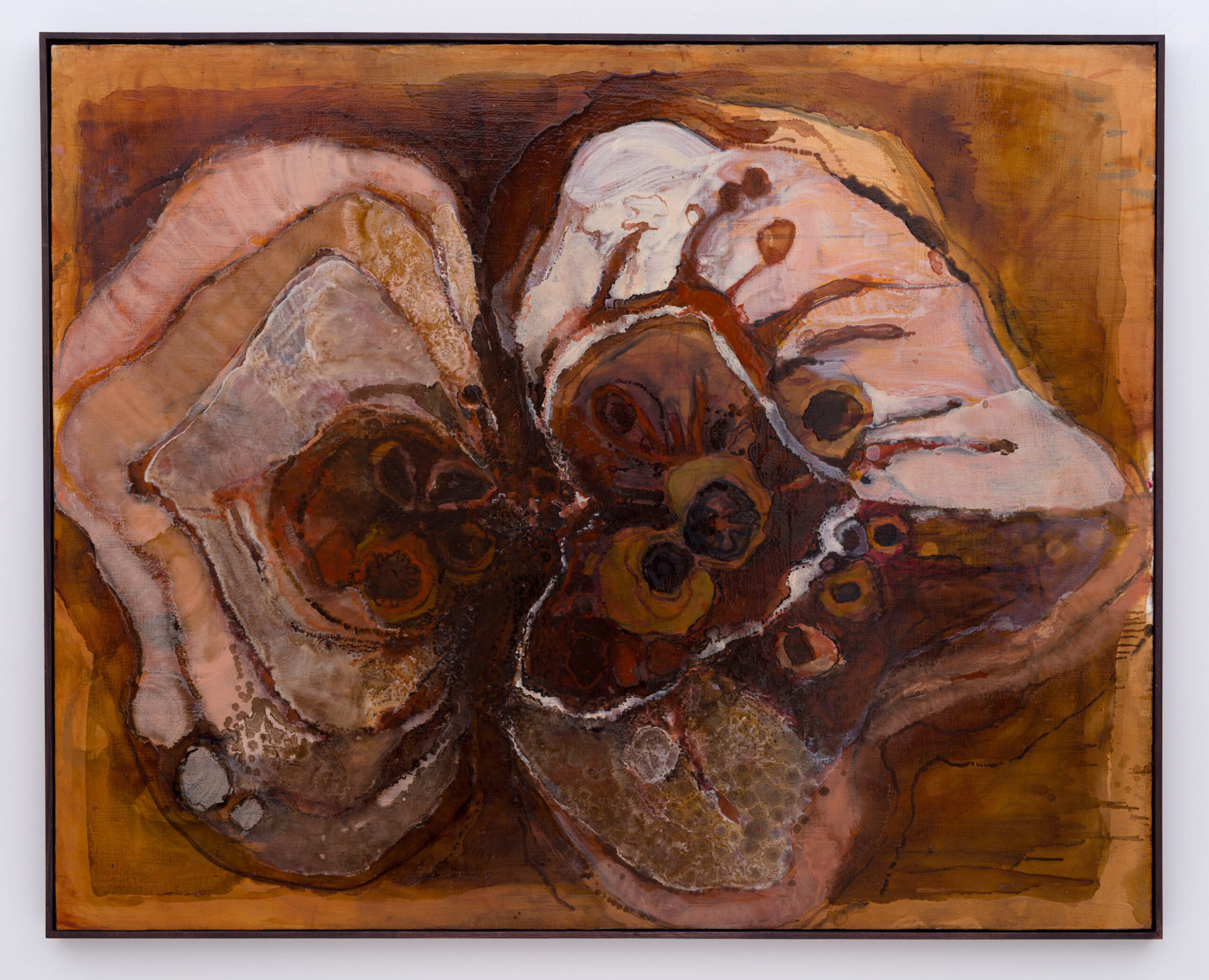
Comprising six paintings and one sculpture, Island that does not know the sea (on display at Arcadia Missa until the 12th of April 2024) is the Tokyo-based artist’s first solo exhibition in the UK. The title emerged from Sugihara’s research into the pancreas, which she explains is “often referred to as the silent organ as it is highly sensitive, and abnormalities within it often go unnoticed until it is too late.” During this research, she discovered the presence of cell structures within the pancreas known as the Island of Langerhans. Sugihara explains that “[as] I was working on the series, I imagined living on the Island of Langerhans. I wonder if I would really think of the horizon in front of me as the sea, as I am doing my tasks on a quiet island. The sea in this title is both information and emotion. An island that does not know the sea will continue to float on the sea without knowing the sea.” Sugihara’s thought experiment is realised in the eponymous work, Island that does not know the sea, an infinite undulation of mountains sprawled across a canvas over a metre and a half wide. The work draws on a similar colour palette to its exhibited peers, a heady mix of reds, oranges and browns – a nod to the fleshy tones of the anatomical drawings that Sugihara studies. In Island that does not know the sea, however, the palette is noticeably deeper, almost burnt. The mountainous landscape melts into the sky, forming an unrelenting endlessness; washes of dried blood and rust leave the land looking vast and barren, thirsty even, as though the painting needs a drink.
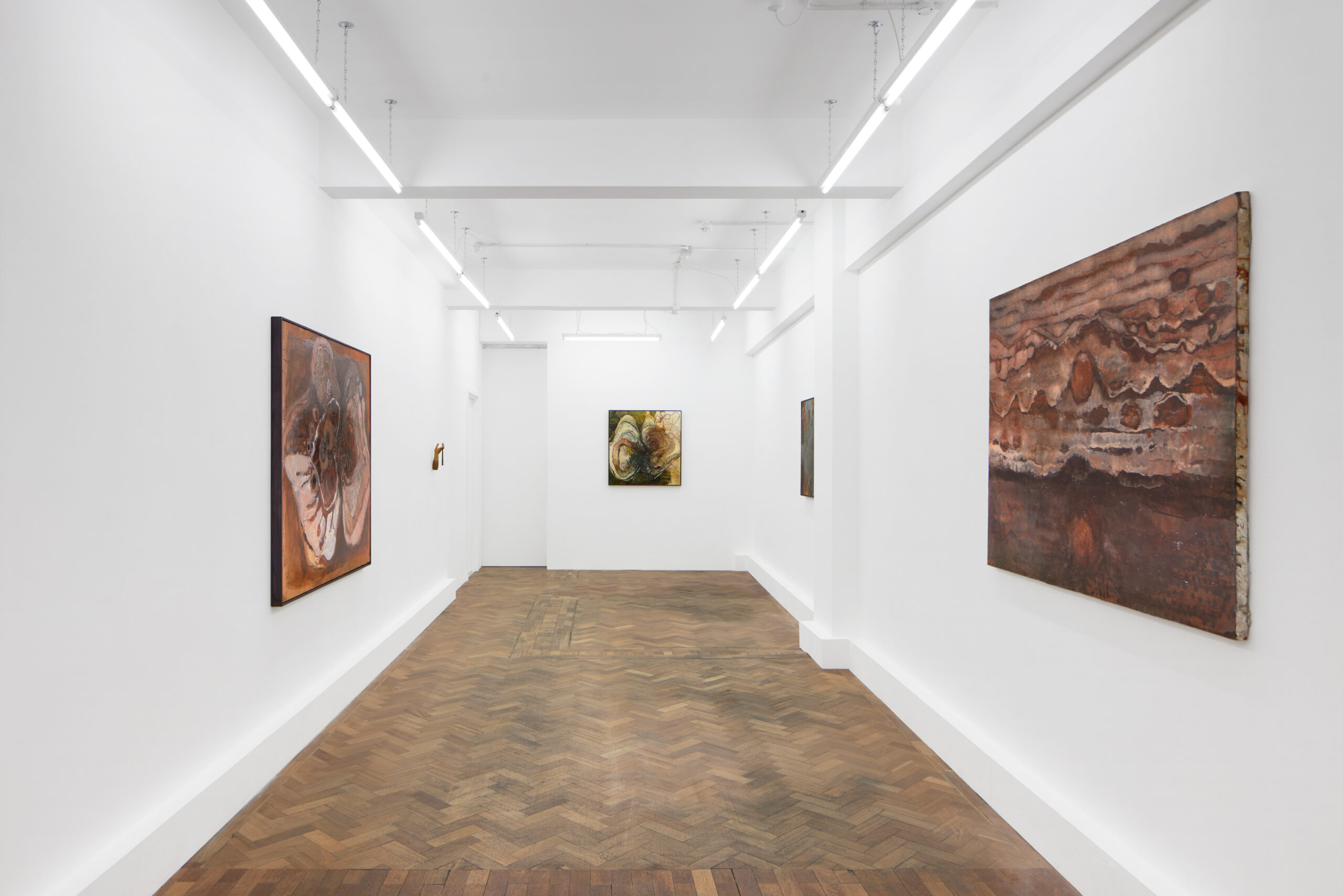
Sugihara’s paintings are like flat sculptures. The lacquered surface creates a soft sheen which works to mimic the quality of a smooth ceramic. But Sugihara’s surfaces aren’t perfect up close, where you can see the layers of paint and varnish, the small globs of paint and the ripples in the varnish. In Corolla, small cracks appear on the painting’s surface; coupled with the mossy blue-green tinges, these imperfections appear like spores, giving the work an organic, almost underwater feel.
The artist tells me that she “wanted [her] paintings to have the impression of something wriggling beneath the surface of the water”. She continues: “As a child I owned a pleco, a tropical fish in the catfish family that primarily feeds on algae, but I rarely cleaned the tank. As a result, the tank became murkier and murkier, and the pleco became almost invisible. I still recall the sensation that something was definitely there, and the air bubbles it emitted were both frightening and captivating—I couldn’t take my eyes off the tank.” The palette of this memory blooms throughout the show.
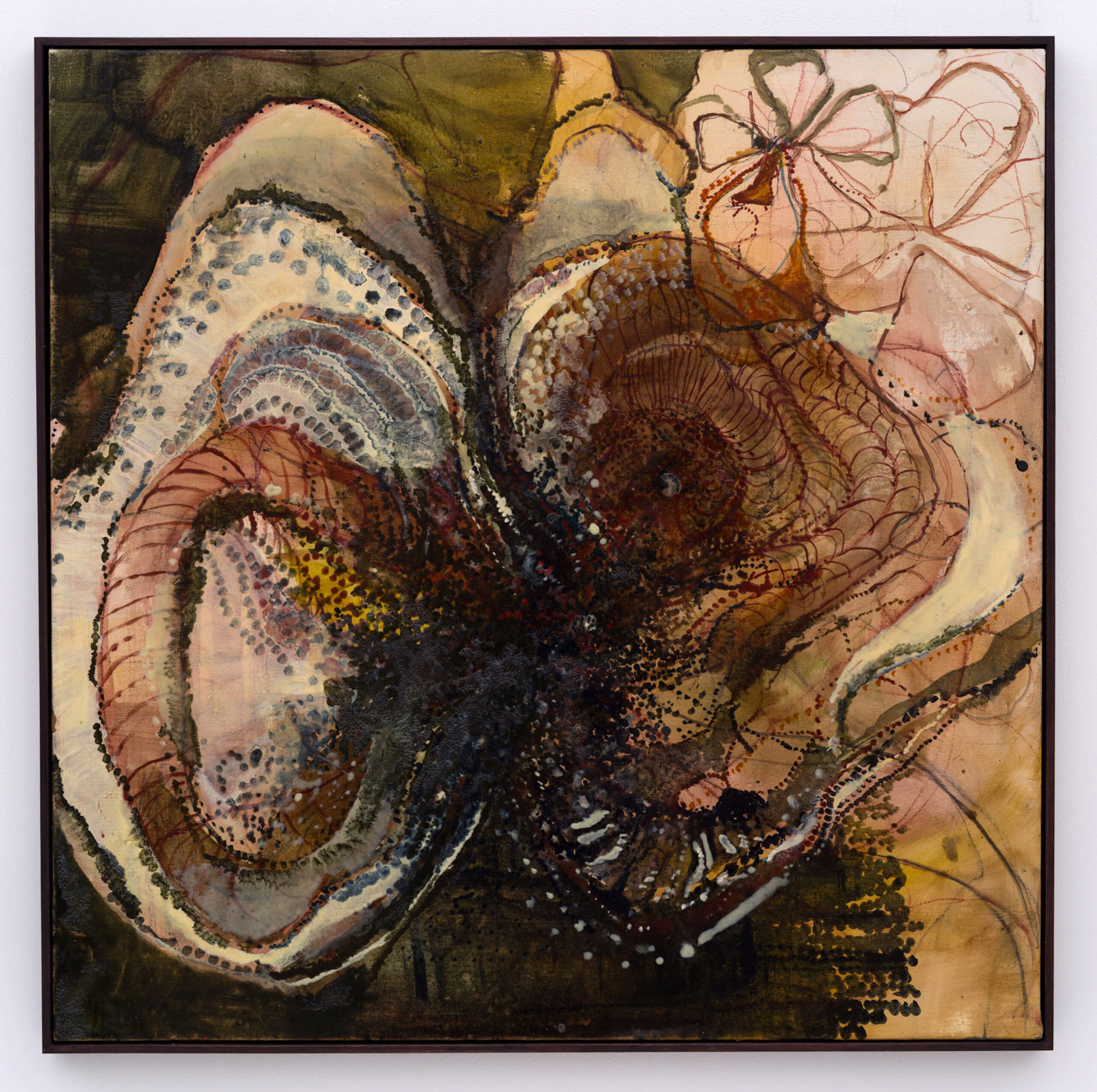
Memory plays a central role in Sugihara’s practice. She explains that before starting a series of paintings, she selects specific objects which, while not chosen deliberately for this reason, are often related to living organisms. She believes this is because of her “universal interest in living things and the fact that she believes in the memory of the body”. Body memory refers to the idea that different parts of the body, not only the brain, can store memories and emotion. There are traces of the human body throughout Sugihara’s practice. Occasionally, they are explicit, as in Untitled, a mottled yellow wax sculpture of a half-open hand clutching black beads. Mostly, though, these nods to the body are far subtler – a single nipple in Corolla, or a lung-like shape in Gather.
The ‘memory of the body’ feels especially pertinent to Fall and Gather. The former is visually violent. A long vertical strip runs down the left edge of the canvas, with black spots bleeding into a dark orange background. A cacophony of deep browns and blacks form a large gash, ripping from the centre-left edge towards the right-hand side. Hypnotic red forms pierce through the layers of paint. Visually, it’s hard to discern what the painting depicts; in fact, I’m not sure it’s trying to represent anything in particular. But it’s a bodily sensation. It feels violent, tense, and seductive all at once.
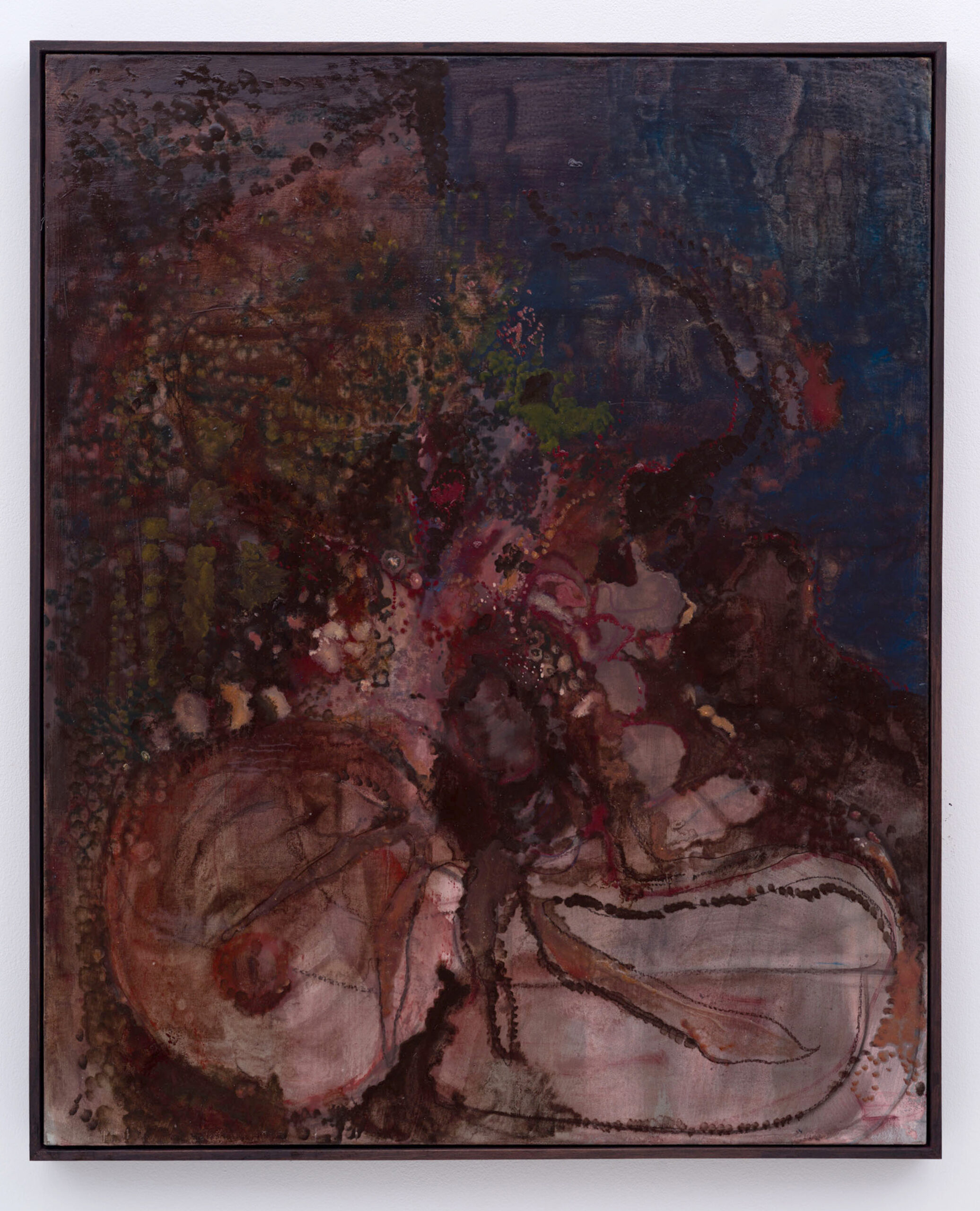
Gather, at almost one metre by one metre, is a perfect square shape. The central form looks alive, like pulsating lungs; you can almost see the organs contracting as the air pumps in and out. These beating lungs, though, could just as easily be an unknown creature’s tentacles, and the knotted feelers instead a spiral staircase. Gather could be anything, or even all of these things. Like Fall, it doesn’t really matter whatever it is (or isn’t) trying to represent or depict, the feeling of entanglement hits like a suckerpunch to the stomach.
Throughout Island that does not know the sea, Sugihara builds her paintings. paintings through the accumulation of numerous layers of oil paint. She explains: “I prefer to use a highly absorbent gesso [a ‘primer’ used to prevent paint from soaking into the canvas/board] for the first layer. The initial image I paint almost disappears by the time the painting is finished. Using a highly water-absorbent gesso allows me to feel like the invisible images underneath the surface serve as the internal support for the painting”. While gesso physically serves as a protective barrier between the paint and the canvas it also feels protective, building her initial ideas and memories into the foundation of the painting.
Sugihara’s paintings are unsettling experiences in themselves. The artist explains that “I understand the significance of emotions and, at the same time, acknowledge their vulnerability”. She confesses “that it is very difficult to articulate subtle emotions, which can lead to various misunderstandings.” It’s this honesty that seeps into the works; she’s not afraid of ‘misunderstandings’. I think she’s chasing them.
Written by Vaishna Surjid
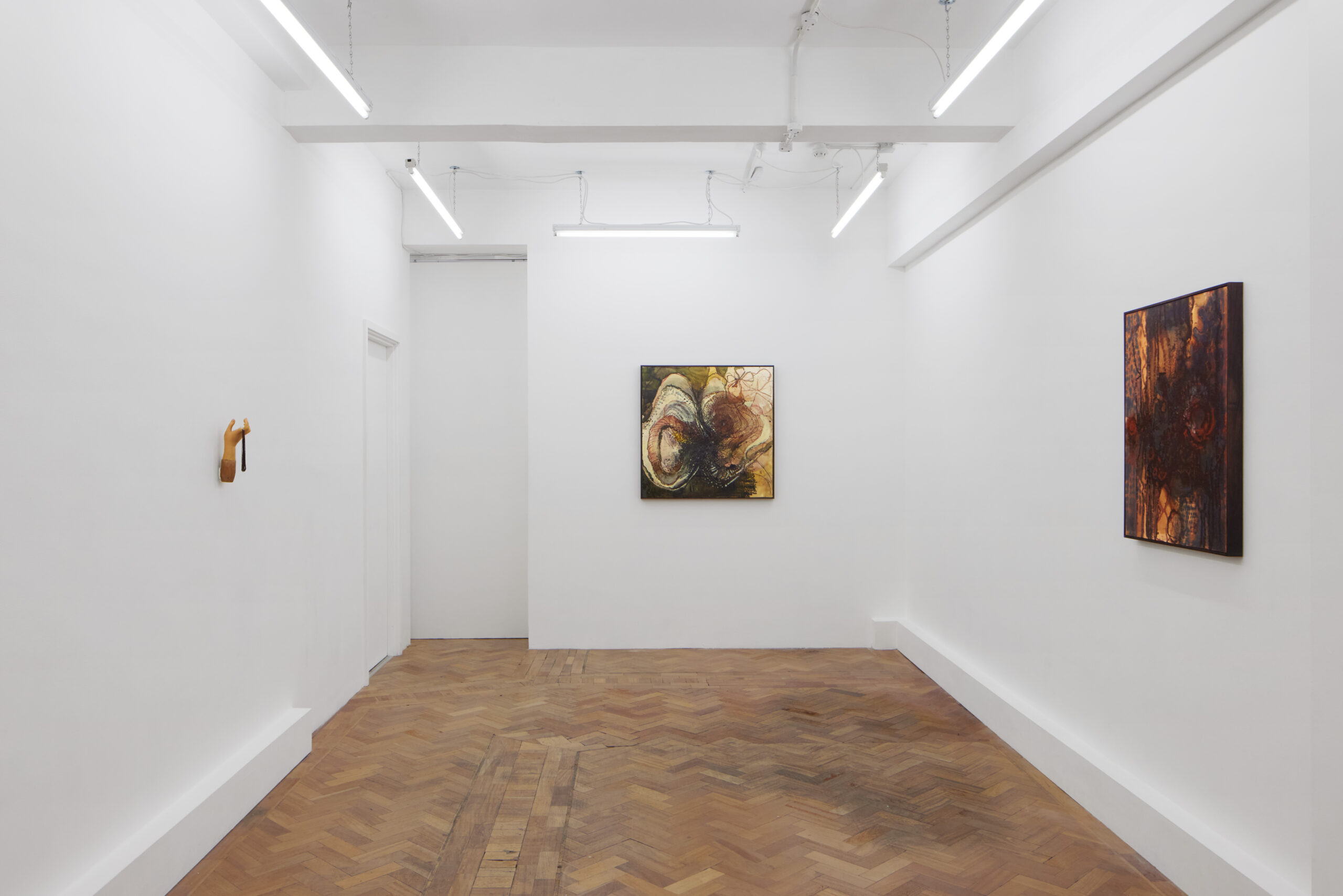
Island that does not know the sea is on display at Arcadia Missa until the 12th of April 2024.
find out more